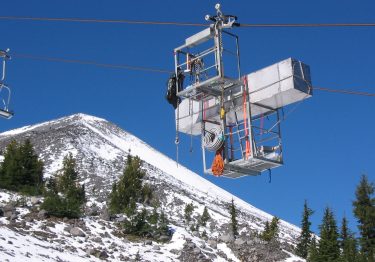
An unusually warm patch of seawater off the West Coast in late 2014 and 2015, nicknamed “the blob,” had cascading effects up and down the coast. Its sphere of influence was centered on the marine environment but extended to weather on land.
A University of Washington Bothell study now shows that this strong offshore pattern also influenced air quality. The climate pattern increased ozone levels above Washington, Oregon, western Utah and northern California, according to a study published Feb. 15 in Geophysical Research Letters, a journal of the American Geophysical Union.
“Washington and Oregon was really the bullseye for the whole thing, because of the location of the winds,” said lead author Dan Jaffe, a professor of atmospheric sciences at UW Bothell. “Salt Lake City and Sacramento were on the edge of this event, but because their ozone is typically higher, those cities felt some of the more acute effects.”
Read more at UW Today »
